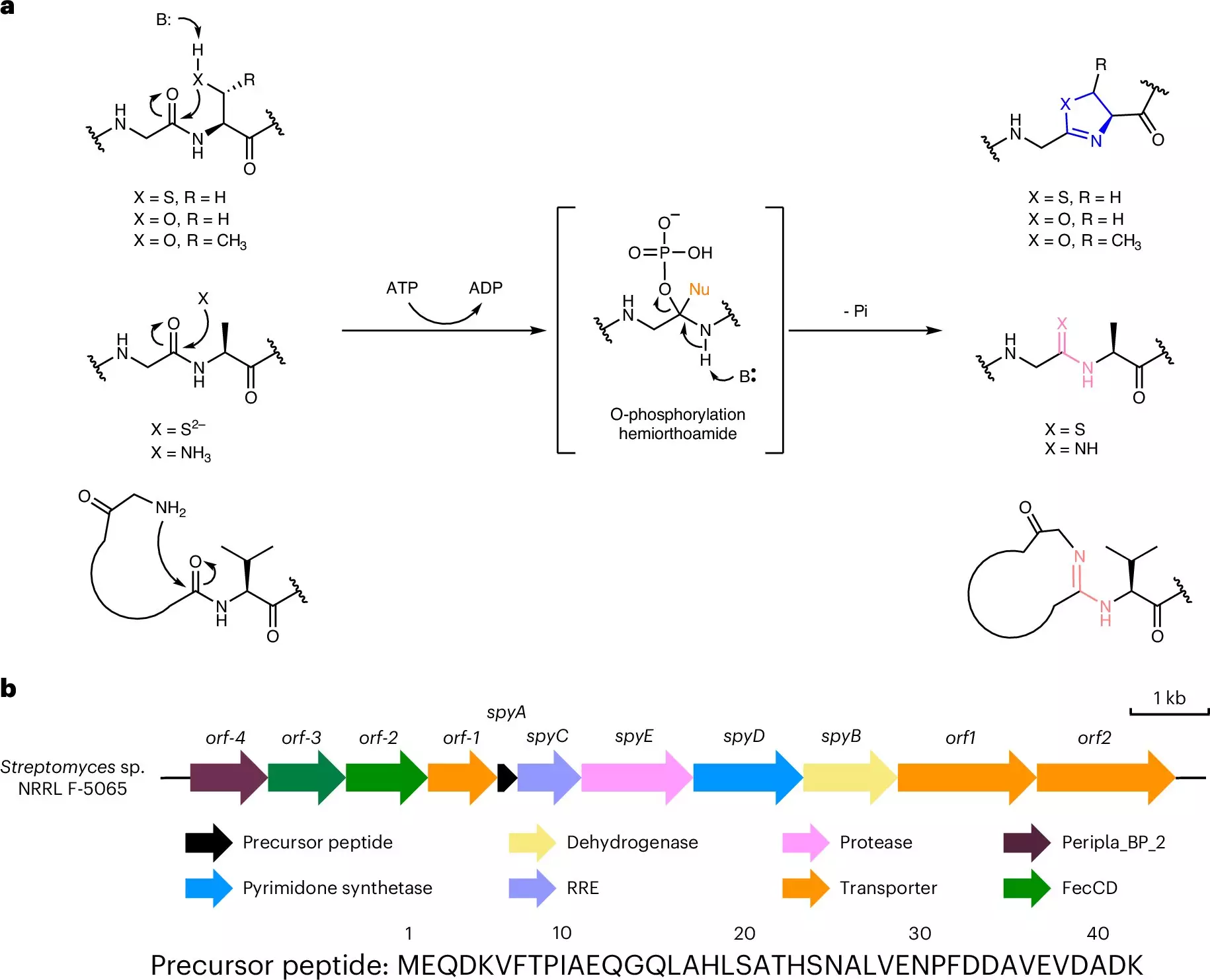In the evolving realm of biotechnology, the integration of different biological systems holds the promise for groundbreaking therapeutic advancements. Recent research has unveiled the potential of biohybrid molecules, which artfully merge the precision of DNA’s homing capabilities with the diverse functional attributes of proteins. This innovative approach is not merely an academic curiosity; it represents a significant stride toward creating highly targeted therapies that can intervene in cellular processes associated with diseases. The findings highlighting these developments were published in the prestigious journal, Nature Chemical Biology, providing a fresh perspective on how therapeutic agents can be synthesized more efficiently.
At the heart of this research lies the pivotal realization that the existing molecular-building machinery in bacteria can be repurposed to fabricate an extensive library of DNA-protein hybrids. This method stands in sharp contrast to traditional synthetic pathways, which have typically involved time-consuming and labor-intensive processes. As Satish Nair, a leading biochemistry professor at the University of Illinois Urbana-Champaign, elaborates, the two fundamental biological blocks—nucleic acids and amino acids—have historically operated independently. The quest for uniting these components into a hybrid format has led to significant breakthroughs after many years of experimentation.
The situational irony that sparked this research illustrates the essence of scientific discovery. Initially focusing on proteins with metal-binding capabilities, Nair and his team fortuitously recognized a report from the John Innes Centre regarding a bacteria-produced hybrid that excited their curiosity. This chance observation initiated a collaboration between the two research teams, ultimately confirming the existence of a previously unnoticed DNA-protein construct.
This newfound understanding of synthetic biology emphasizes the potential of bacteria, particularly E. coli, as facilitators in the rapid development of biohybrid molecules. Nair’s research team uncovered a dual enzyme system where two bacterial enzymes work synergistically to convert peptides into functional DNA-protein hybrids. The first enzyme, YcaO, orchestrates the conversion of a specific amino acid into a cyclic structure, mimicking the nucleotide bases found in DNA and RNA. The second enzyme, a protease, cleaves the modified peptide to produce a complete nucleobase-protein hybrid.
The simplicity of this conversion process is striking; by combining just three components—peptides and the two enzymes—researchers can achieve the coveted hybrids. This not only robustly showcases the efficiency of the biological systems but also has far-reaching implications in producing molecule libraries that could pave the way for novel therapeutic interventions.
Implications for Drug Development
The implications of these findings are profound. By enabling the systematic generation of biohybrid molecules, researchers can explore a vast expanse of potential therapeutic agents that effectively target specific genomic regions or RNA molecules implicated in various diseases. Enhancements in drug precision could lead to breakthroughs in treating genetic disorders by allowing for the simultaneous inhibition of dysfunctional gene transcription and interference with pathogenic noncoding RNAs.
Nair’s enthusiastic remark, “Now, we’re off to the races,” signifies the momentum this discovery has generated. It marks a new paradigm where labs are no longer limited by labor-intensive synthesis, but rather empowered by a biological system capable of producing numerous compounds, potentially revolutionizing the therapeutic landscape.
The integration of DNA and protein functionalities into biohybrid molecules could substantially alter our approach toward medicine, heralding an era of precision therapeutics. As laboratories harness bacterial machinery for efficient molecular production, the opportunities to explore previously unimaginable therapeutic avenues will expand considerably.
With ongoing research and collaborations, the future of biohybrid technologies looks promising. The drive to create these hybrids, which can bindingly navigate the complexities of gene regulation and cellular processes, underscores the vital intersection of biology, chemistry, and medicine. As we stand at this threshold, it becomes evident that the true potential of biohybrids may be just beginning to unfurl, inviting researchers and innovators to explore its myriad possibilities.


Leave a Reply